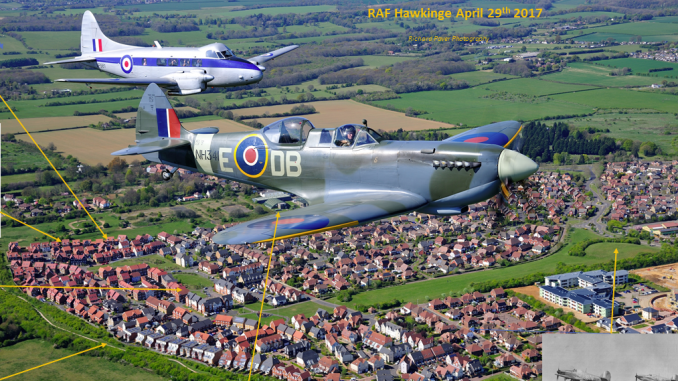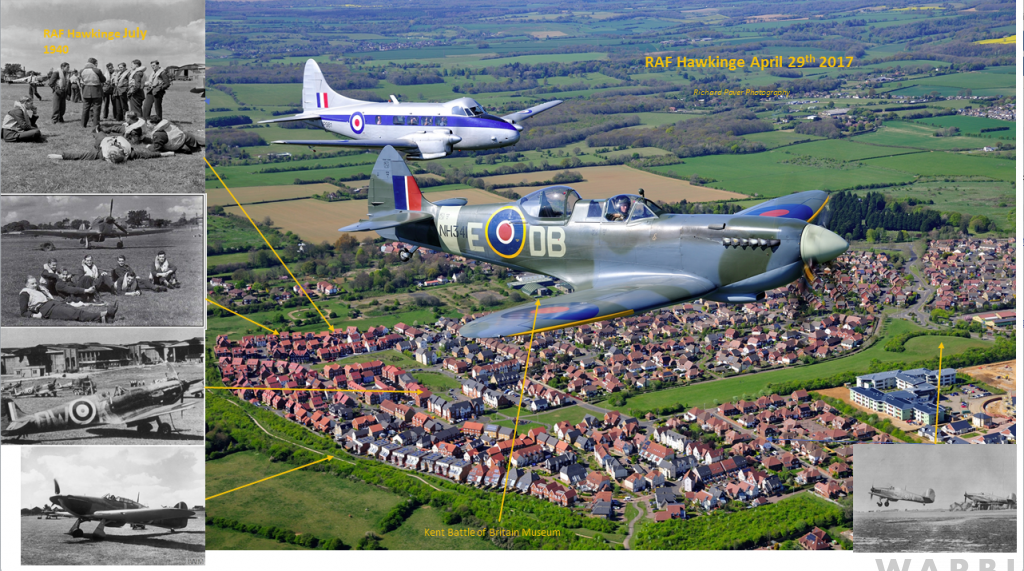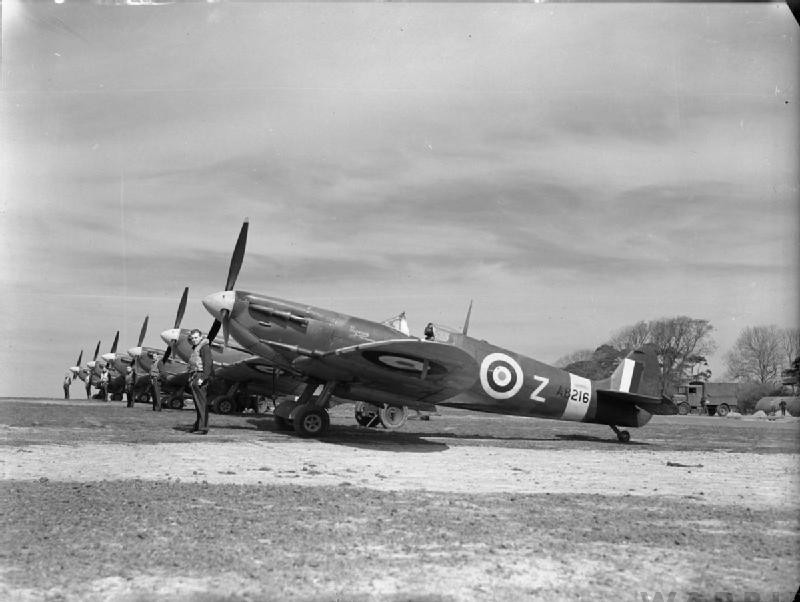
by Richard Paver
If you’re unfamiliar with the term rephotography, it involves the process of reshooting old photos, as accurately as possible, from their same vantage point and scope in the present day. This can prove complicated to achieve, especially when it comes to older photographs, as places can change dramatically over time, which can make it exceedingly challenging to find the exact spot where someone captured an image many decades, or even a century or more earlier. Social media has produced a lot of great work on the ‘Then and Now’ subject, often portraying locations of WWII battles or other historic events. That being said, photographer Richard Paver has taken this art to whole new level, by incorporating warbirds overflying historically significant locations in Royal Air Force history.
In 2017, I flew a Spitfire photo sortie over the site of the former RAF Hawkinge, a key, all-grass fighter field in 1940 during the Battle of Britain. Sadly most of this historic site is now built-overwith housing, however in the summer of 1940 an Imperial War Museum photographer visited the aerodrome and captured some marvelous images of Spitfires, Hurricanes and personnel, amongst other details.
I have plotted some of these views onto a picture of the site today (see below). The Kent Battle of Britain museum is presently located in some of the remaining airfield buildings, so the site still maintains some connection with its historic past.

During WWII, RAF Hawkinge was the nearest Royal Air Force air station to enemy-occupied France, with Luftwaffe fighters based in the Pas-de-Calais being a mere 6 minutes flying time away. Naturally the airfield and the region surrounding it were targets for Luftwaffe bombers. In addition, the location was subjected to long-range, cross-channel shelling from the German artillery batteries stationed along the French coast – indeed the region surrounding Dover and Folkestone gained the apt moniker, Hellfire Corner as a result. Despite the passing years, today’s visitor can still savor the atmosphere of the airfield’s past amongst the period landmarks and buildings which remain, reminders of those perilous days. Indeed, prior to the airfield’s redevelopment in 1993, one could still see the English Channel and even the French coast from this historic spot.



Be the first to comment
Graphic Design, Branding and Aviation Art